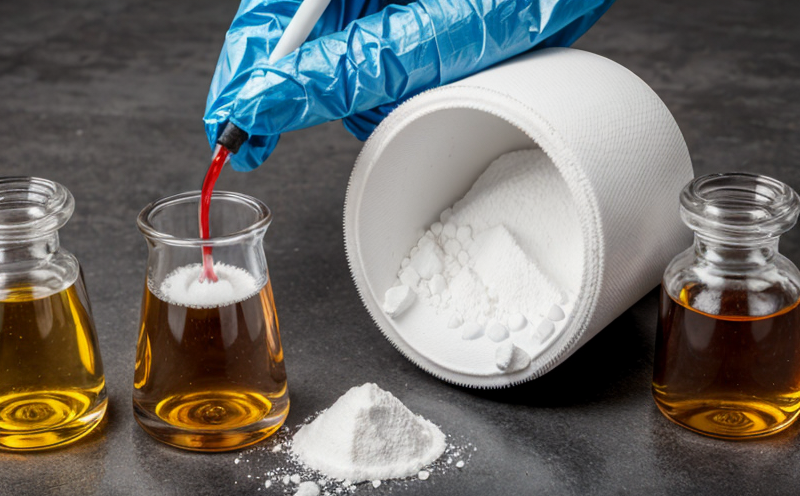ISO 3616 Testing for Metallic and Nonmetallic Coatings Sulfur Dioxide Exposure
The ISO 3616 standard is a crucial test method designed to evaluate the resistance of metallic and nonmetallic coatings against sulfur dioxide (SO₂) exposure. This test is essential in ensuring that materials used in environments with high levels of SO₂, such as industrial settings or atmospheric pollution areas, maintain their integrity over time.
The test simulates real-world conditions where coatings may be exposed to SO₂, which can lead to corrosion and degradation. By understanding the performance of a coating under these conditions, manufacturers and quality managers can ensure that products meet regulatory requirements and deliver long-term reliability in demanding environments.
During this test, specimens are subjected to controlled exposure to sulfur dioxide gas. The test typically involves exposing coated samples to SO₂ for specified durations at defined concentrations. The specimens are then visually inspected or analyzed using various techniques such as profilometry, cross-sectional analysis, and other relevant methods to determine the extent of degradation.
The methodology is particularly important in sectors like aerospace, automotive, construction, and environmental engineering where exposure to SO₂ can significantly affect material performance. Compliance with this test ensures that products meet international standards set forth by ISO 3616, thereby enhancing trustworthiness and reliability in global markets.
For quality managers and compliance officers, understanding the nuances of this testing is critical as it helps identify potential issues early on, ensuring that the final product meets not only regulatory requirements but also exceeds customer expectations. R&D engineers benefit from this test by gaining insights into material behavior under specific environmental stresses, which can guide future product development.
Procurement professionals also find value in ISO 3616 testing as it provides a standardized approach to selecting suppliers who meet stringent quality and durability criteria. This ensures that the materials used are reliable and capable of withstanding harsh conditions throughout their lifecycle.
In summary, ISO 3616 testing is vital for ensuring that metallic and nonmetallic coatings can withstand exposure to sulfur dioxide gas without significant degradation or loss of performance. It plays a pivotal role in maintaining product integrity and reliability across various industries.
Scope and Methodology
The scope of ISO 3616 testing is specifically tailored to assess the resistance of metallic and nonmetallic coatings against sulfur dioxide (SO₂) exposure. This method is particularly applicable in environments where industrial processes or atmospheric conditions expose materials to SO₂, leading to potential corrosion and degradation.
- Specimen Preparation: Specimens for testing are typically prepared by applying a coating of interest onto a suitable substrate. The coating can be metallic or nonmetallic depending on the application requirements.
- Exposure Conditions: Specimens are exposed to sulfur dioxide gas under controlled conditions, including temperature and relative humidity, which simulate real-world environmental stressors.
- Testing Duration: The duration of exposure varies based on specific needs but is generally designed to mimic the expected lifespan or operational environment of the product.
- Data Collection: After exposure, specimens are evaluated using various techniques such as visual inspection, profilometry, cross-sectional analysis, and other relevant methods. These evaluations help quantify changes in coating integrity and performance.
The methodology is designed to provide accurate and reliable data that can be used to make informed decisions about material selection and product design. Compliance with ISO 3616 ensures that products meet the highest standards of quality and durability, enhancing their reliability in demanding environments.
Why Choose This Test
- Regulatory Compliance: ISO 3616 testing ensures that materials meet international standards, providing a competitive edge in the global market.
- Enhanced Reliability: By identifying potential issues early on, this test helps ensure long-term reliability and performance of products.
- Data Accuracy: The standardized approach of ISO 3616 testing provides accurate and reliable data that can be used to make informed decisions about material selection and product design.
- Cost Efficiency: Early identification of potential failures through this test can save costs associated with warranty claims, recalls, and customer dissatisfaction.
- Supplier Evaluation: This testing method provides a standardized approach for evaluating suppliers who meet stringent quality and durability criteria.
- Environmental Considerations: Compliance with ISO 3616 ensures that products can withstand harsh environmental conditions, reducing the need for frequent replacements or maintenance.
Choosing ISO 3616 testing is a strategic decision that supports the development of high-quality products capable of performing reliably in challenging environments. It demonstrates commitment to excellence and customer satisfaction, thereby building trust within the industry and among end-users.
International Acceptance and Recognition
The ISO 3616 standard is widely recognized and accepted across various industries. Its global acceptance is a testament to its robustness and reliability in assessing the resistance of coatings against sulfur dioxide exposure.
Many international standards organizations, including ASTM, EN, IEC, and others, reference or incorporate aspects of ISO 3616 into their own guidelines. This broad recognition underscores its significance in ensuring product quality and durability across different regions and markets.
Compliance with this standard is a prerequisite for many industries where exposure to SO₂ poses significant risks to material integrity. By adhering to ISO 3616, organizations can ensure that their products meet the highest global standards of quality and reliability, thereby gaining competitive advantages in both domestic and international markets.
The widespread acceptance of this test also fosters a culture of continuous improvement within industries, encouraging stakeholders to adopt best practices and innovative solutions for enhancing product performance. This not only benefits individual companies but also contributes to overall industry advancement and sustainability.





